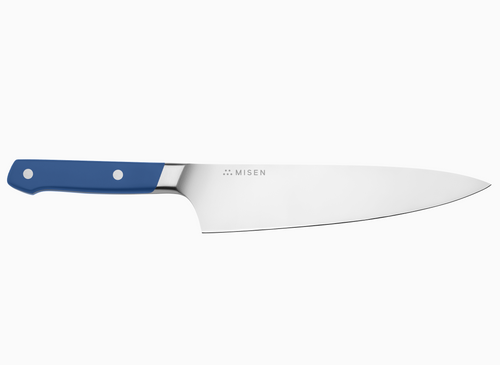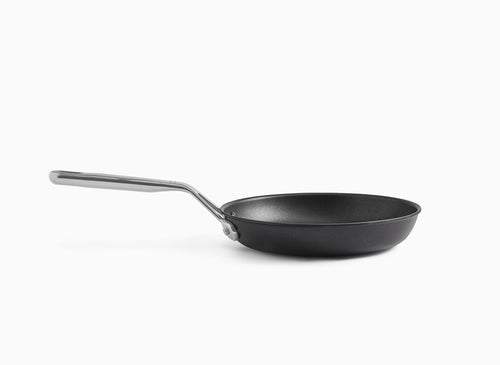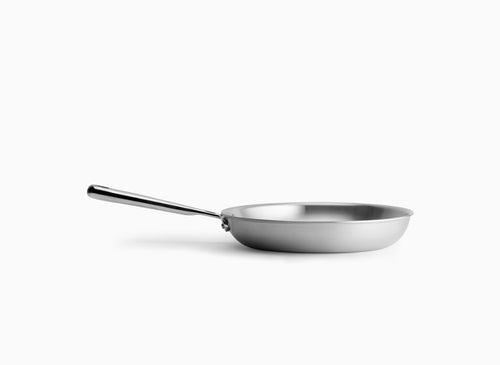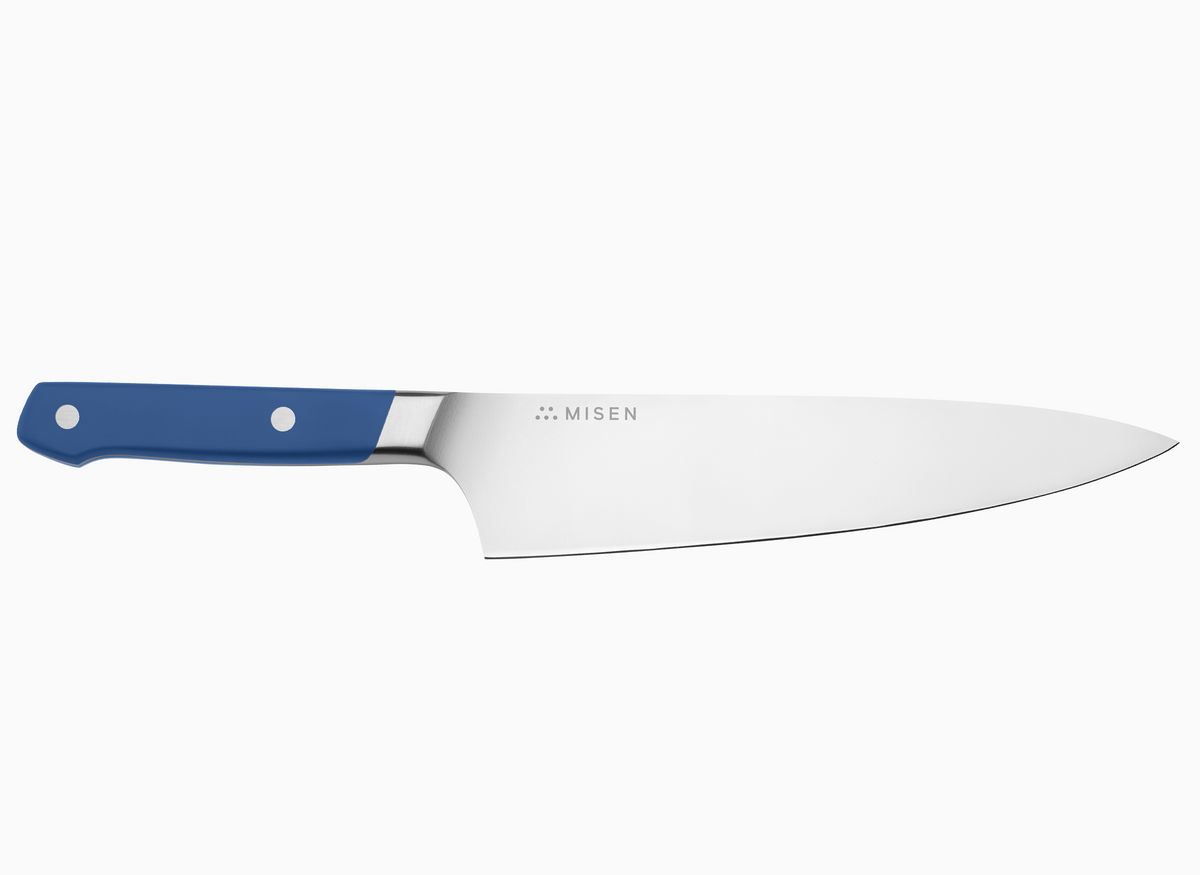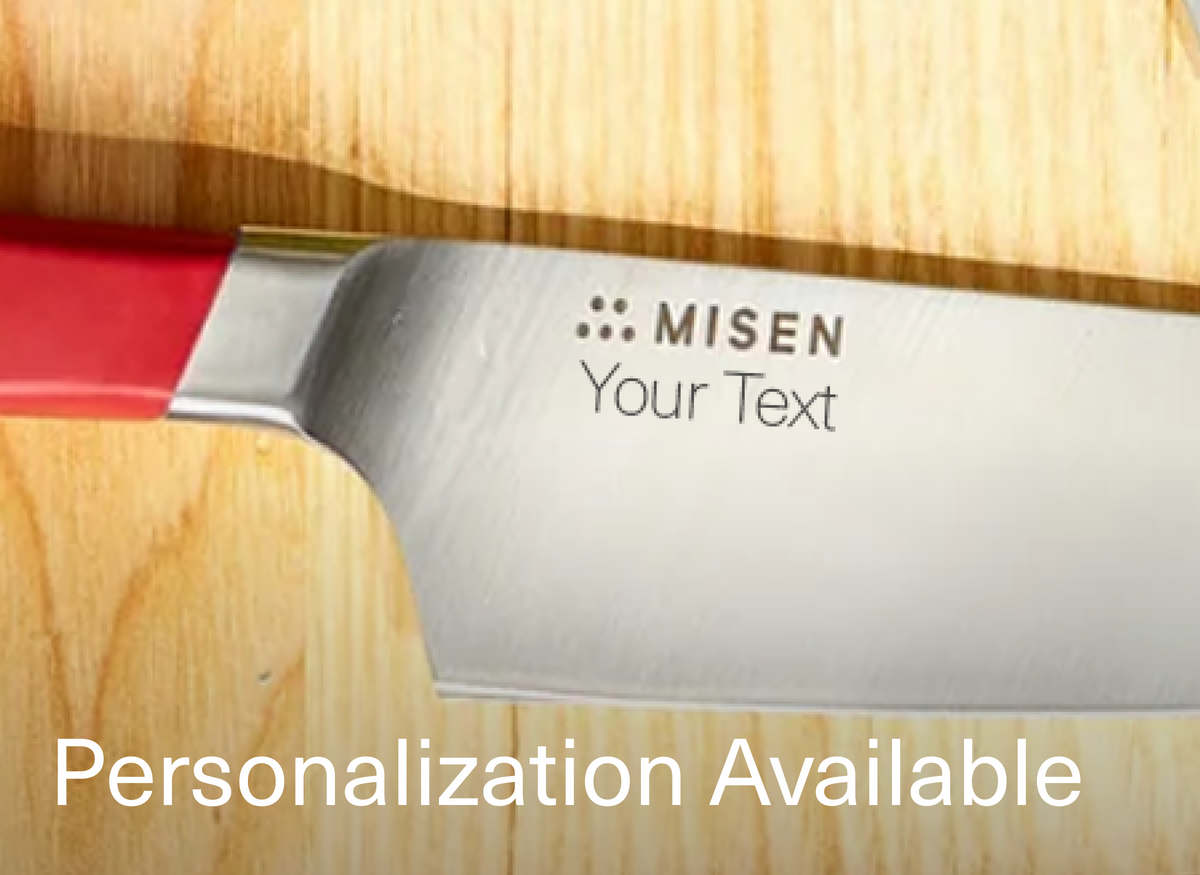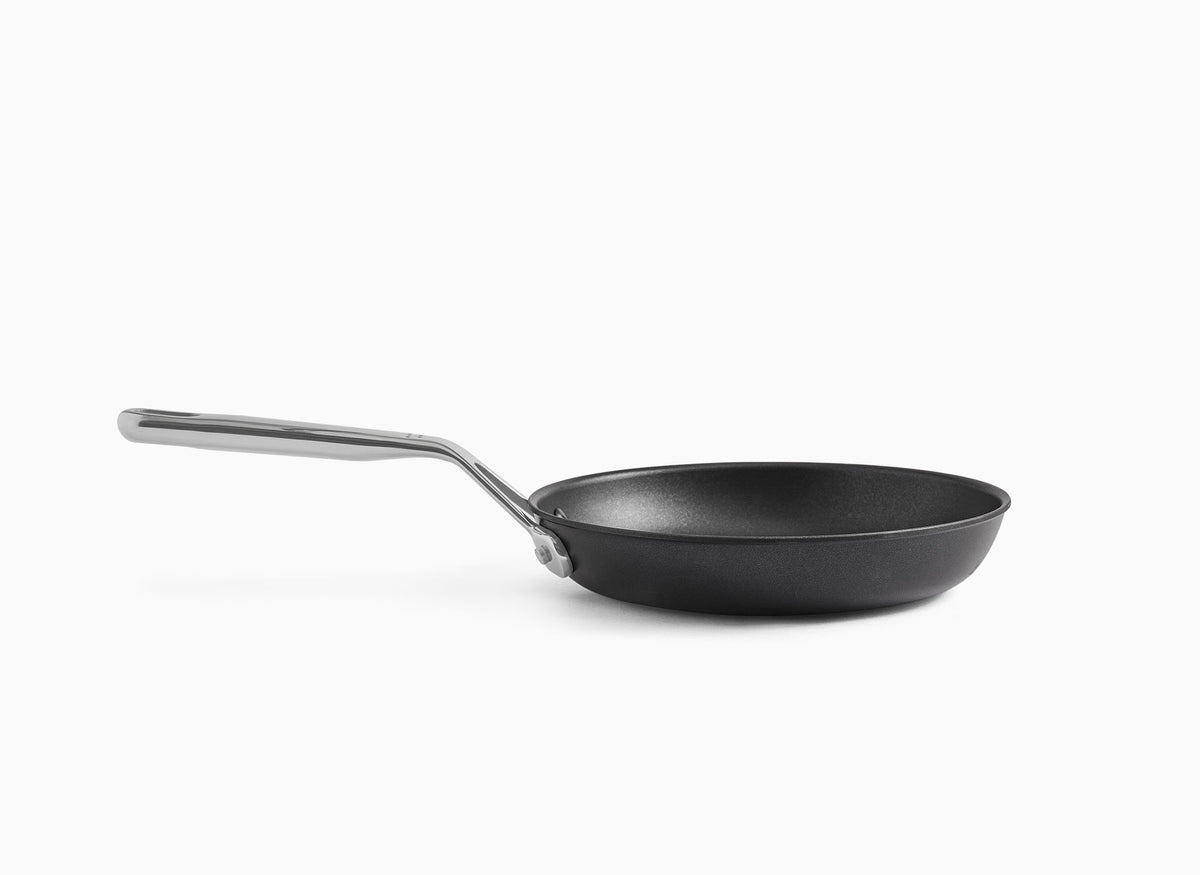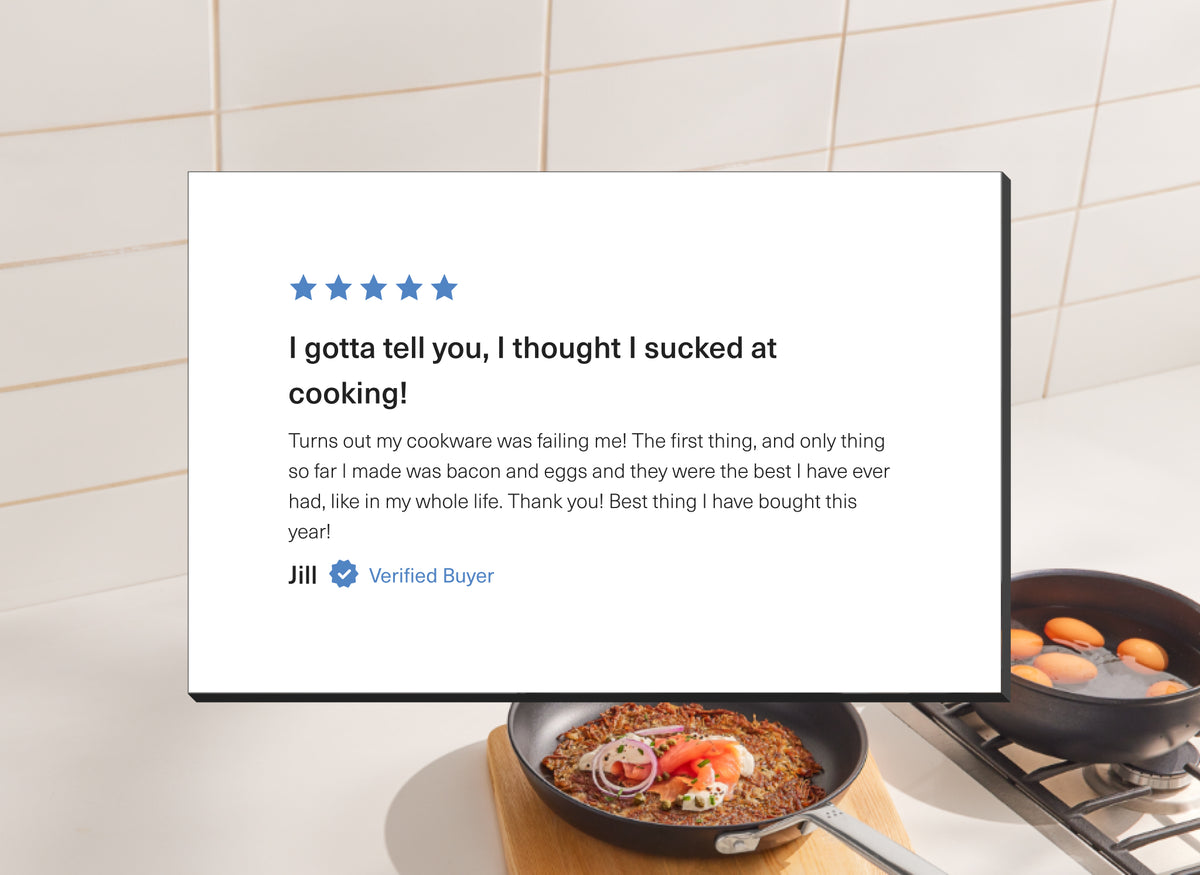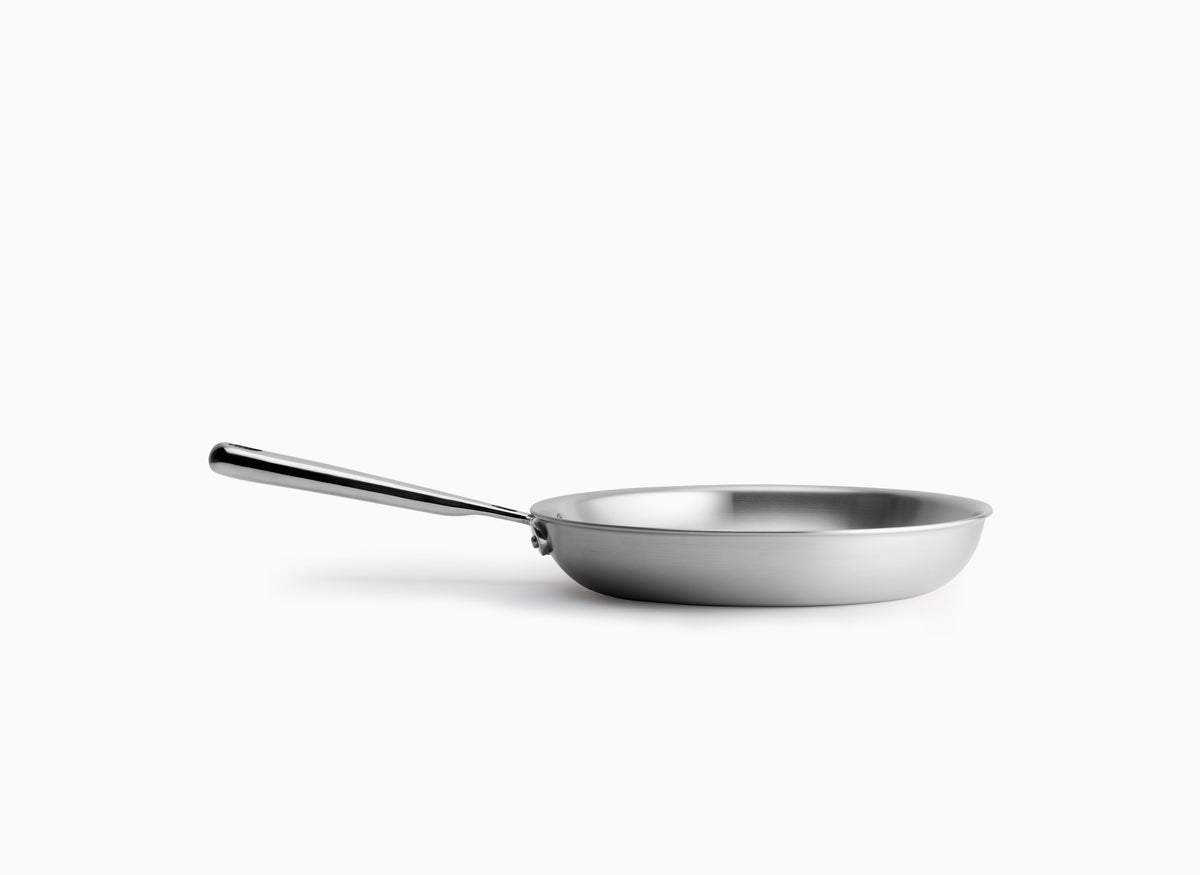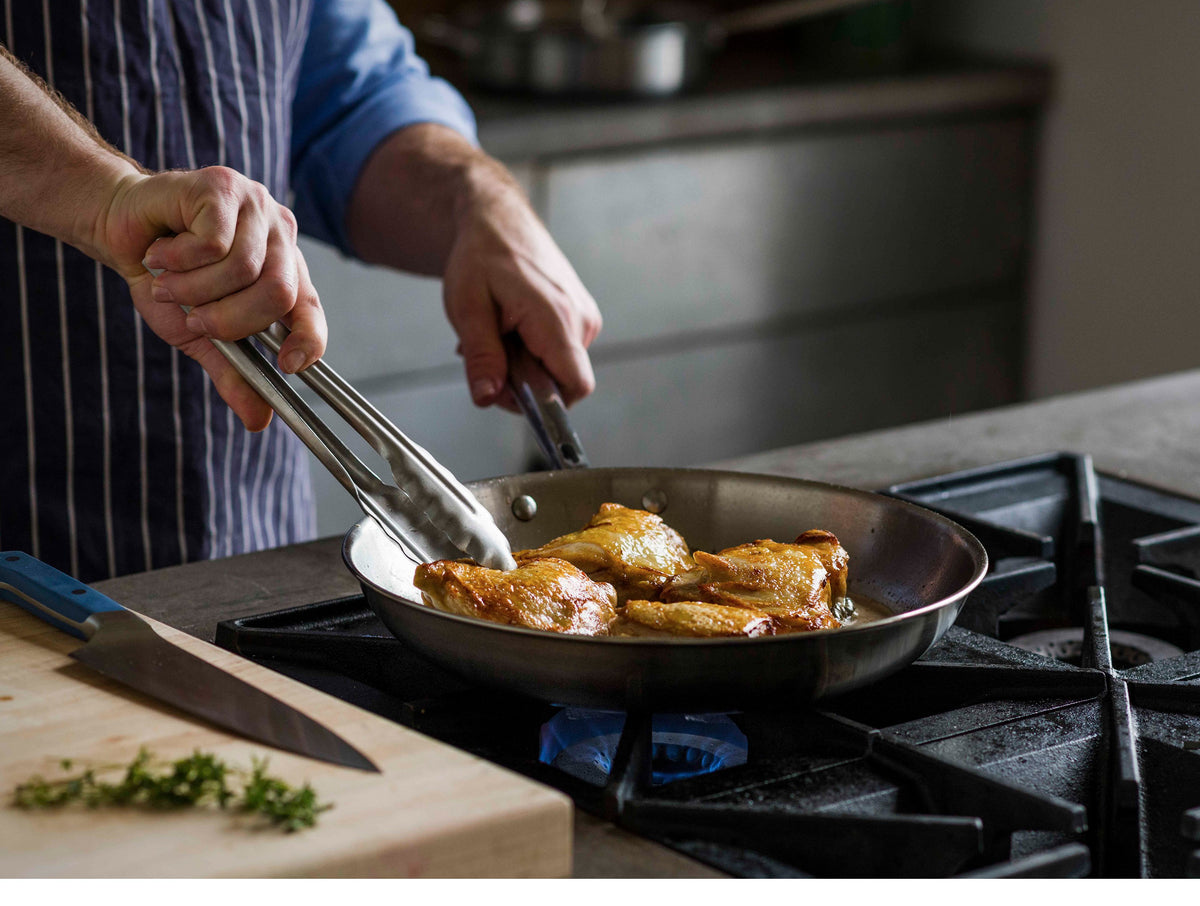Skillet vs. Pan: Which Is Best for Your Cooking Needs?
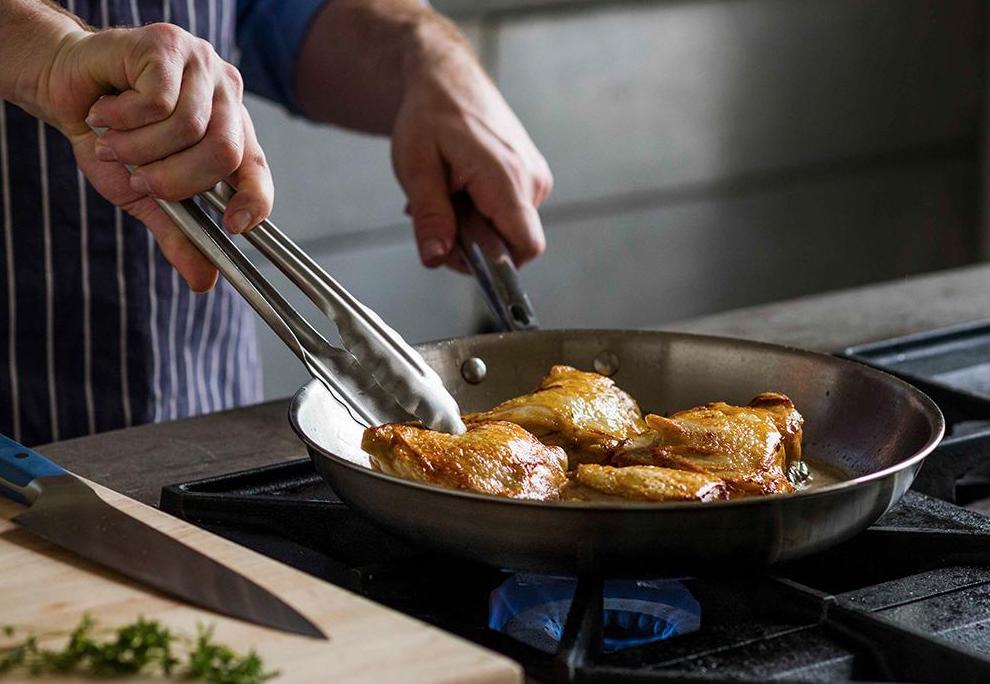 Skillets and sauté pans appear very similar, but the main difference lies in their shape.
Skillets and sauté pans appear very similar, but the main difference lies in their shape.
- Pan is a generic term that can refer to lots of types of cookware.
- A skillet, also known as a fry pan, has some distinct differences from a sauté pan.
- The pan you choose will affect your cooking experience.
Picture a piece of cookware with a large flat bottom — one with short sides, a long handle, and the perfect shape for cooking up a tasty seared steak. What comes to mind?
The most common answers are “a skillet” or “a pan” — both of which are correct.
In the range of cookware, skillets and pans are two of the most commonly interchanged. They are fairly similar in shape, available in almost the same sizes, and are often chunked into the same product category.
But to keen observers and cookware enthusiasts (that’s us!), there are some key differences. This article compares and contrasts skillets and pans and shares the best cooking techniques and dishes to use each one.
Skillets vs. Pans: Why the Confusion?
A lot of the confusion between skillets and pans comes from their names. Skillets, for one, are also called frying pans or frypans. In addition, the word “skillet” is frequently used in reference to cast iron pans whether or not they are actually cast iron skillets.
Pans are open to even more interpretation. While most cooks consider a pan to be a sauté pan, the term often refers to all types of cooking vessels. The phrase “pots and pans” is synonymous with general cookware, and “pan” is commonly used when describing other pieces — crepe pan, sheet pan, roasting pan, and the like.
In addition, skillets and pans are available in very similar sizes (typically 8-inch, 10-inch, or 12-inch diameters) and materials (stainless steel, aluminum, multi-ply, and nonstick coating).
While skillets and pans are easily mistaken for one another — and can be used interchangeably in a pinch — the actual cookware items do have their differences.
The Differences Between Skillets and Pans
The main difference between a skillet and a pan is their shapes. A skillet has shorter, curved sides, while a sauté pan has straight, vertical sides.
With their flared rims, skillets provide a wide, open view and convenient access to stir, move, or flip ingredients around. The smooth, curved sides also help you quickly slide a finished dish from fry pan to plate.
However, as cookware diameters are measured at the opening (i.e., from side to side of the top), a 12-inch skillet means roughly 10-inches of real cooking surface. Any food that leans on the curved edges is not in direct contact with the heat and won’t cook as quickly as food on the bottom surface. However, the wide opening and relatively light weight of skillets makes them very easy to maneuver so food can be quickly shifted inside.
Sauté pans, in contrast, have sides that meet the bottom surface at a right angle. This defined edge leaves the entire bottom of the pan even and flat, making for a much larger surface area. As compared to skillets of the same diameter, a 12-inch sauté pan has 12 inches of usable cooking surface. The sauté pan’s tall sides allow it to hold a greater volume of liquid than a skillet and help prevent spillovers.
With tall sides and a wide base, sauté pans pack more weight. Larger sauté pans may even come with a secondary helper handle, which is a small loop handle attached opposite the main long handle as well as a cover or lid. This is helpful, as the weight of larger sauté pans is difficult to move around, especially since they can hold plenty of food.
When to Cook With a Skillet
 The sloped shape and light weight of skillets make them perfect for quick cooking and stir-fries.
The sloped shape and light weight of skillets make them perfect for quick cooking and stir-fries.
Contrary to what many expect, skillets are actually great for sautéing and stir-frying. The lighter weight makes them easy to shake, and their sloped sides helps redistribute the food back to the bottom of the pan. The wide opening also allows access to the cooking surface, making it easy to stir the ingredients.
You can use skillets for pan-frying or searing a few servings of meat. However, dishes that cook quickly and need constant stirring or flipping, such as a beef stir fry or a spinach mushroom omelet, gives a skillet a chance to really shine.
When to Cook With a Pan
Sauté pans are very versatile, as their shape allows them to hold liquids. This means they can be used for making sauces in addition to braising, poaching, shallow-frying, searing, and pan-frying (if the ingredients don’t often need to be flipped).
With their sizeable bottom and weight, however, sauté pans actually aren’t best for shaking and flipping food around. Instead, sauté pans are built for larger, longer cooking. If the dish requires a good amount of liquid and not much stirring, such as shallow-fried falafels or braised lamb shanks, a sauté pan is perfect for the job.
Considerations for Buying a Skillet or Pan
 Sauté pans are deeper than skillets and perfect for cooking dishes that require a little more liquid.
Sauté pans are deeper than skillets and perfect for cooking dishes that require a little more liquid.
No matter which piece of cookware you initially lean toward, it’s important to look at a few key factors before you purchase your skillet or sauté pan.
Material
Skillets and sauté pans are great for everyday cooking and are therefore best when made from durable and versatile material. While each type is available in an assortment of materials — stainless steel, nonstick surfaces, ceramic, cast iron, etc. — a single layer of material can’t provide all the functions needed for a variety of cooking.
A good choice, especially for heavily used cookware, is a tri-ply or five-ply combination of stainless steel and aluminum (or hard-anodized aluminum). Stainless steel provides a durable surface, providing excellent heat retention and safety. Interior layers of aluminum ensure even heat distribution. All these work together to create the ideal cooking base, whether you’re using a skillet or sauté pan.
Handle Construction
Handles are another important part of cookware, particularly for long-handle skillets and sauté pans. Skillet dishes often need to be shaken and flipped, while sauté pan dishes tend to be used for a lot of liquid and ingredients. Because of this, both skillets and sauté pans require stay-cool handles that are securely riveted to the cookware base.
Cookware Size
Skillets and sauté pans are offered in similar sizes, ranging from 3.5-inch to 17-inch diameters. The most popular are 8-inch, 10-inch, and 12-inch diameters, with most home stoves comfortably accommodating a maximum of 12-inches.
Again, these cookware measurements are taken at the top, so the flat cooking area of a skillet will be a few inches below its listed size. (Note: If cooking on a glass-top stove, the skillet’s curved sides won’t come in contact with the heat source.)
With their straight sides, sauté pans have similar bottom and top measurements, so a 12-inch pan will offer a cooking area of the same size. Sauté pans are often described according to capacity, and a good choice for home cooking is anywhere from 1 quart to 7 quarts.
The ideal cookware size is a personal choice and a lifestyle choice. Smaller skillets and sauté pans are great for one- or two-person meals or quick bites (ex., breakfast scrambles or side dishes), while larger sizes are able to cook family-size portions or complete one-pan meals.
What’s Cooking?
Either a skillet or pan would be a great tool for any home cook. While both can be used to sear a tenderloin steak or chicken breast to perfection, they have their differences for other home cooking methods. Skillets are great if you prefer stir fries and easy pan-to-plate fare. Sauté pans, on the other hand, are perfect for longer cooks, high volumes of food, or any dish with a decent amount of liquid.
